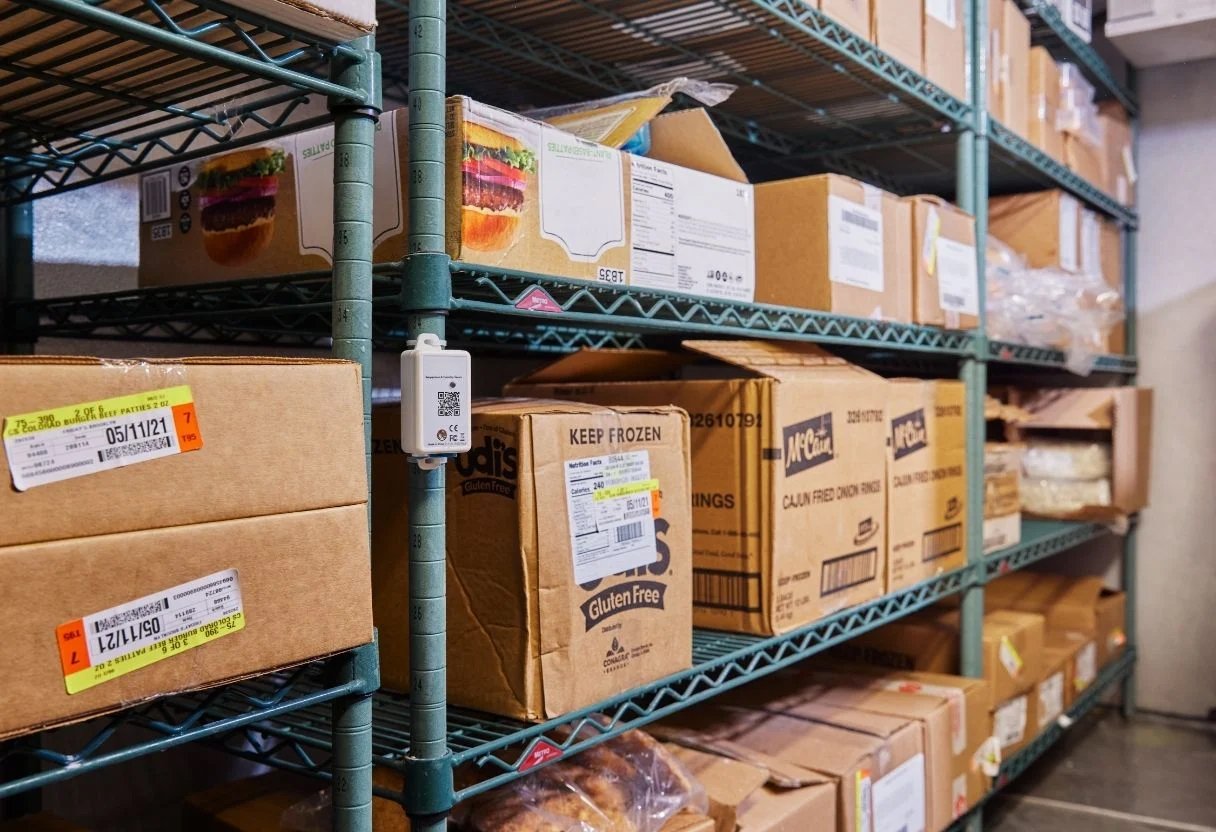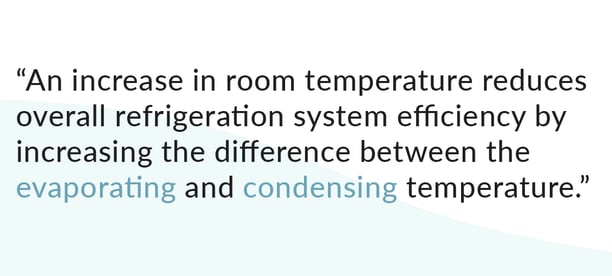5 Ways to Reduce Commercial Refrigerator Energy Usage

Here are five ways to reduce commercial refrigerator electric usage in your commercial cooler. Let GlacierGrid help you improve energy efficiency through remote temperature monitoring.
Fact: 64% of people in the United States dine out at least once a week.
With so many hungry mouths to feed, foodservice operations require many resources to function adequately. This is particularly true in inventory, staffing, and utilities. Unfortunately, these resources are experiencing price shifts making them more expensive than ever before.
Nowhere is this more true than in power consumption.
This resource has risen in price in the US by 1.8% annually over the last 25 years. Some states have even seen higher increases, with Hawaii topping the list at 3.86%.
Given these rising prices, operators everywhere are asking themselves how to increase their energy efficiency. The secret may be in commercial refrigeration, such as walk-in refrigerators and walk-in freezers. Refrigeration accounts for up to 44% of foodservice energy cost, the largest share of any source. Therefore, reducing energy consumption is central to stabilizing overhead costs.
Want to learn how you can reduce energy costs in your foodservice business? Read on to learn more.
What is the average energy use of a typical commercial refrigerator or freezer?
The buildings that house businesses in the foodservice industry are some of the most energy-intensive properties in the US. Annually, they use an average of 38 kilowatt-hours (kWh) of electricity per square foot. That’s about five to seven times more energy per square foot than other commercial buildings. However, this can be ten times more in high-volume quick-service restaurants due to environmental controls such as heating and HVAC systems.
Commercial refrigeration systems mainly use so much energy due to their continual use. To keep perishable inventory fresh and safe to eat, cold storage equipment such as walk-ins and freezers must maintain static temperatures below 40° and 32°, respectively. Another reason commercial refrigerators may see reduced energy efficiency is due to poorly sealed glass doors of lowboys, reach-in refrigerators, or display cases.
While these figures offer a baseline of use in commercial refrigeration equipment, several common factors increase energy consumption:
- Perpetual use causes components such as the compressor, condenser, and fan motor to break down over time. The decline in efficacy of these parts forces your commercial refrigeration units or cooling system to compensate by pulling more electricity.
- Depending on where your business is located, extreme ambient conditions force your refrigeration systems to over-exert themselves to stay operational.
- Some equipment, particularly walk-ins, see a lot of use throughout service. As your staff wanders in and out, the open doors let warm air in, causing your equipment to work harder to self-correct. Reducing door openings during service can help keep your refrigeration equipment sealed, thus reducing temperature fluctuations.
- The overcooling required for commercial refrigeration equipment to self-regulate may lead to increased instances of defrost cycles, which are themselves highly energy-intensive processes.
- As components break down, refrigerants, the chemical compounds that regulate heating and cooling in refrigeration equipment, tend to seep out. Without a full charge, the temperature may gradually rise, requiring more power to keep the threshold within an acceptable range. Ultimately your food may defrost, leading to it spoiling and needing to be thrown away.
To learn more about how a commercial refrigeration system works, read our article on the topic.
Five tips on how to reduce the energy cost of a commercial fridge
With the average foodservice business spending $2.95 per square foot on electricity each month, electricity purely for refrigeration costs $1.30. That accounts for 3-5% of that businesses’ total revenue. Thankfully, even small efforts to reduce energy consumption can have big payoffs, even if it means solely implementing LED lighting. Even a 20% increase in electricity savings will yield an additional 1% in profits. The best part is anyone can realize these energy efficiency benefits by following a couple of easy steps.
- Preventative maintenance: Ensure that teams perform monthly inspections of the components of your commercial refrigeration unit. If components such as the compressor, condenser, evaporator coils, or air filter appear clogged with ice or dust, make sure your staff cleans them.
- Gasket replacement: The door gaskets of your refrigeration equipment are the rubber seals on the solid doors that prevent hot air from seeping in and cold air from leaking out. They are often anchored only by glue, which can quickly wear down throughout busy service. Ensure to inspect them weekly and replace them at the first sign of deterioration.
- Upgrade your equipment: With tight budgets in the foodservice industry, upgrading your aging cold storage equipment for high-efficiency new models may seem like a tall order, but the payoffs could be tremendous. Make sure to look for energy star appliances, units certified by the EPA to meet efficiency standards for efficient commercial refrigeration. Energy star appliances are 10-50% more efficient than their counterparts. You may even receive rebates from the government come tax season.
- Implement evaporator fan controllers: Evaporator fans cycle ambient air from the outside to cool air within the refrigeration unit. During times of low use, standard equipment will continue to cycle air. However, with decreased foot traffic, there is no reason to continue to pump cool air into the walk-in or freezer if the unit is sealed correctly. To reduce airflow and thus electricity consumption, consider implementing an evaporator fan controller to restrict airflow during slow times automatically.
- Use remote temperature monitoring: A general warming trend in commercial refrigeration temperatures is commonly an indicator of excessive electricity use. Remote temperature monitoring devices consistently measure the conditions of your cold storage equipment so you can spot warming trends and rectify them before using excess electricity.

Becoming energy efficient with remote monitoring
Without accurate temperature data, restaurants may over or under-cool their inventory. When refrigerators become unreliable or old, foodservice operators compensate by turning down equipment temperature to prevent food from moving into the danger zone.
While this method may prevent food spoilage, the increased energy consumption negatively impacts the business.
Setting your commercial refrigerator or commercial freezer to the optimal temperature outlined above doesn’t mean it will remain that way. Several everyday scenarios can affect the static balance of conditions within your cold storage, including equipment faults, power outages, and staff members frequently opening the freezer door and letting warm air in.
Operators can more easily identify with remote temperature monitors from GlacierGrid; operators can more easily identify if they are overcooling inventory and realized significant energy savings. GlacierGrid helps operators determine if equipment temperature needs adjusting or if an inability to maintain temperature is due to a faulty component requiring immediate maintenance.
GlacierGrid provides 24/7 wireless temperature and humidity monitoring sensors built to perform inside walk-ins, freezers, and other commercial refrigeration equipment. GlacierGrid empowers restaurant operators to understand their equipment better and electricity consumption and energy usage. This reduction will help operators see lower energy bills.
Do you want to see how much money you can save by reducing your electricity consumption and use less energy overall? Click below to try GlacierGrid now.







